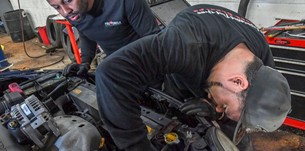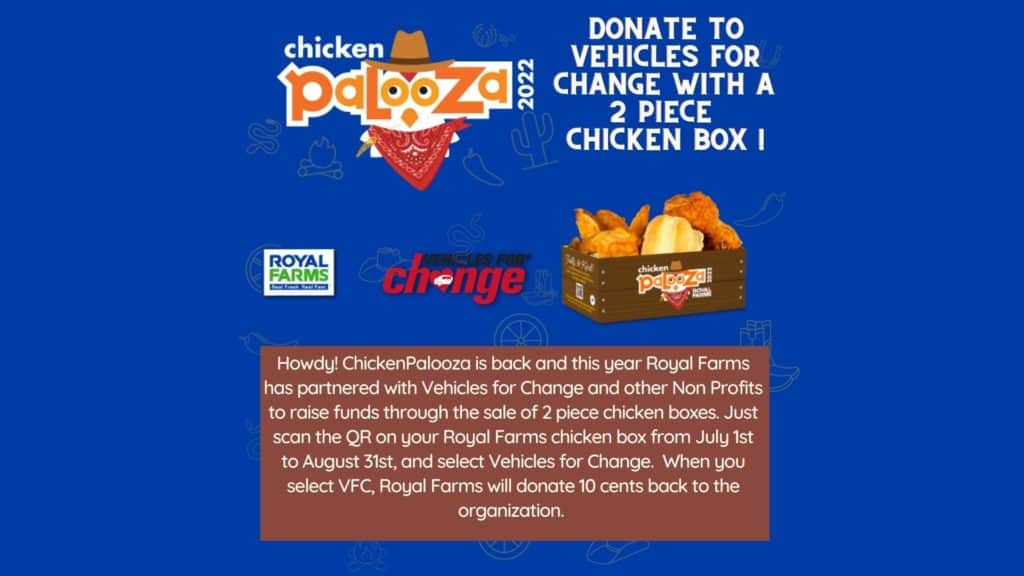FROM THE WASHINGTON POST:
Newly released after serving 21 years in Maryland prisons, Sean Howard may surprise some when they hear he believes his future looks bright.
He’s optimistic, appreciative and confident. That’s because while he was behind bars, he had worked to acquire the two most important ingredients for a successful reentry into society.
An education and a job.
“On my last day inside, I tied up my boots and hit the ground running,” said Howard, who was released in February.
He had discovered a passion for auto repair in prison shop class. Instructors recognized his exemplary attitude and work ethic and recommended him for enrollment in a nonprofit school for ex-offenders called Vehicles for Change.
Located on a 33,000-square-foot site just outside Baltimore, VFC takes donated vehicles, repairs them and awards the cars and vans to low-income families who have no other means of transportation. Those doing the repairs get paid while earning their Class B automotive technician certification.
After four months of training, which includes 90 minutes of classroom study each day, the men and women graduate and are placed in high-demand jobs with dealerships and other auto repair shops. The average pay after three years: $60,000 a year, according to VFC officials.
“We’re not just a jobs program,” said Martin Schwartz, president of Vehicles for Change. “This is a career opportunity. We have two guys making over $100,000 a year. They formed the ‘$100,000 Club,’ and now all the guys are talking about joining.”
As the nation implements the newly passed prison reform legislation, the First Step Act, devising ways to reduce recidivism will be key to its success. Proposals for early releases and shorter sentences won’t amount to much if thousands and thousands of ex-offenders return to a life of crime, as is so often the case.
A 2018 report by the Brookings Institution, titled “Work and opportunity before and after incarceration,”found that in the first year after their release, about 49 percent of ex-prisoners earn less than $500; 32 percent earn between $500 and $15,000, and only 20 percent earn more than $15,000.
More than 2.2 million people are incarcerated in the United States, and more than 620,000 are released from prison annually, the report said. “Among individuals released from prison, one third will return to prison at some point.”
Said Schwartz: “The deck is really stacked against them.”
[Doing time far from home, D.C. prisoners face extra barriers to rehabilitation]
Unless they have a vehicle for change.
“I think education is the gateway,” Howard, 37, told me during a recent break from working on cars at VFC. He had worked hard to earn his GED in prison and went on to take college-level courses in horticulture, along with auto repair classes. But he wasn’t just talking about a formal education. He meant the kind of knowledge you get from older, wiser men — fathers, coaches.
“I had to learn to be myself,” he said, “and not imitate society’s image of who I was supposed to be based on my race and the kind of neighborhood I was from. The images of black people proving their manhood with guns, drugs and money were being projected with such force — in the music, the media, the movies. It was as if I had been looking at myself through a pair of glasses with lenses that belonged to somebody else.”
In 1998, at age 15, Howard dropped out of ninth grade to become a street hustler in Baltimore. During a dispute over drugs, he shot and killed “someone who was taking that same course in life,” as he put it. He was convicted of murder and gun charges and sentenced to two decades and a year behind bars.
“My vision was so limited,” he recalled.
For the first half of his sentence, Howard continued to wear those same glasses. “I kept bumping my head; I kept going backward,” he recalled.
Until, one day, he had enough.
“When you’re 100 percent dissatisfied with your situation — not 80 percent or 90 — 100 percent, that’s when you’re ready to make a serious change,” Howard said. “I was 110 percent dissatisfied. Somebody told me ‘the wise man picks up where he left off; the fool keeps starting over and over, never learning from his mistakes.’ It finally dawned on me which one I was.”
To be accepted into the Vehicles for Change program, Howard had to pass what is known as the Nikki Test, an interview with Nikki Zaahir, who directs the VFC Automotive Reentry Internship Program. “I look for the three A’s,” Zaahir said. “Attitude, aptitude and attendance. I also want to see if they can articulate their dreams, have a vision of where they want to go. Or if they are just trying to get in to pass the time.”
Her evaluations are so accurate that, of the 109 ex-offenders accepted into the program since it began in 2015, only one had returned to prison.
[When an ex-offender couldn’t find a job, he made one for himself]
Some research suggests that it would be more effective to keep people out of prison than trying to keep them from going back once they are released. I asked Zaahir whether a program like VFC in high schools in at-risk neighborhoods would have helped to keep a young Howard out of prison.
Zaahir said she had tabulated the average age of her students the first time they were arrested. It was between 11 and 12 years old.
“These issues predate high school by many years,” she said. “Most of them have never seen the inside of a high school.”
And yet, programs such as VFC have made a path that even the most troubled can follow. If they are willing to change.
Schwartz began Vehicles for Change in 1999 as a nonprofit effort by Precision Certipro, an auto parts distributor. The purpose at the time was to help low-income families get affordable cars. In 2015, having recognized that demands for auto mechanics were going unmet, he added an auto repair component for ex-offenders.
Before setting up the nonprofit, he had been a baseball coach at a community college and a soccer coach at a high school, both in Maryland.
“My goal was to become a college baseball coach, but sometimes we don’t have a choice in what we are doing,” he said. “Someone says, start this program, and instead of coaching kids on a ballfield, you end up coaching people just out of prison on the kind of skills they need to get employed.”
There is also a VFC program in Detroit, and Schwartz is hoping to expand nationwide. He’s been trying to start a program in Prince George’s County, which has Maryland’s second largest population of incarcerated residents after Baltimore.
“We’re just having trouble raising the money for the land,” he said.
No money for a program that reduces recidivism, reduces poverty and increases employment, but Maryland has earmarked more than $200 million for a new prison.
The Brookings Institution report noted that: “Policies focused earlier in life that increase childhood investments, reduce discrimination, reform criminal justice practices, or target economic distress in specific neighborhoods may be more effective tools for both reducing future incarceration rates and by aiding reentry following release.”
I asked Howard whether he felt any bitterness knowing more could have been done to ameliorate the racial and economic disparities that perpetuate the cycles of crime and poverty he became caught up in.
But he had let go of all the what-ifs, the should-haves and the could-haves a long time ago.
“I used to say, ‘if only I knew then what I know now, I’d have a million-dollar car dealership,’ ” Howard recalled. “I could talk to a hundred guys in prison, and we’d all say, ‘If only there had been a man figure in my life — not a just a male figure, a man — who had been willing to invest in our passions and dreams, what a difference that would have made.’ ”
In prison, he had learned the benefits of quieting the mind through meditation, to put aside regret and remorse. To find peace.
“I may think about the wrongs I have done, but not about what others may have done,” he said. “I have a job repairing cars for needy families, and I will work my hardest to make sure they are the safest cars those families will ever ride in.”
A job and a lesson in gratitude, that’s how you take a sure-footed first step.


